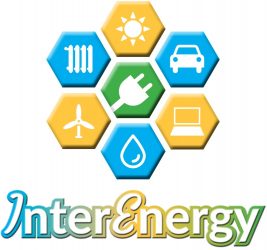Energy systems in the transition from fossil-based and centralized production, with high GHG emissions, to low-carbon systems based on variable and distributed renewable energy, pass through different phases of transformation. In the first phases, raise of integration of variable renewable energy sources (RES) can be performed in most of energy system configurations without the implementation of additional storage and conversion technologies. In later stages, with a high share of variable RES in the mix, synergies with other systems are needed to integrate the cheapest and sustainable energy. This project deals with interrelation between different power-to-x and demand response technologies and market coupling in the energy transition. Role of these technologies is investigated from the context of market coupling, which is already underway in the European Union. In this research, the key question which is addressed is the balanced integration of different power-to-X and demand response technologies, determining their optimal mix and avoiding unnecessary technological lock-ins. In order to achieve this, new modules will be created to model the behaviour of power-to-X and demand response technologies. Also, emerging markets for such technologies will be elaborated as well as business models for their integration. This is an important step in the digitalization of the energy system and employing the synergies in order to decarbonize multiple systems.
Methods of the research
Planning the integration of power-to-X and demand response technologies can be divided into steps in accordance to energy planning methods since the goal of the research is to show the homogenous implementation of these technologies with new production capacities. Steps employed in the project are:
1. Gathering of the most recent and relevant data on power-to-X and demand response technologies. This step is performed by using the results from previous projects implemented by the research group, in particular RESFLEX project, a Croatian science foundation funded project that was successfully completed in 2019. Also, collaboration with project associates is used to collect the most recent and relevant data from the rest of the EU (Prof. Lund, Prof. Stadler) and from China (Prof. Wang).
2. Creation of new modules for demand response and power-to-X, which have to design new availability factors and demand curves to be used for optimization/simulation modules in open code software packages, to represent realistic behaviour of such technologies in the context of the whole energy system. These modules are then used in combination with open source software, such as Dispa-SET and the results are compared with commercial software (PLEXOS) to verify the outputs.
3. Modelling of demand response and power-to-X integration in long-term energy planning is performed in open source software, using the results of previous steps.
4. Modelling of power-to-X in coupled markets and analysis of opportunities for such technologies in emerging market schemes is performed to collect knowledge about the future options and new markets in digitalized energy system, such as peer-to-peer trading through blockchain technology, new ancillary services markets and balancing markets, since these technologies are expected to be the price makers in future energy markets.
5. The final step is the analysis of the results and recommendations, as well as dissemination of project results in the scientific community and most relevant stakeholder groups, which can undertake concrete actions to foster the integration of such technologies
Objectives
To produce the comprehensive knowledge base in the research group, objectives include creation of conceptual and technical solutions for the implementation of power-to-X technologies in top-down approach (transmission level) and demand response technologies in bottom-up approach (distribution level) in accordance with most recent and relevant data that will be collected during the project. Also, the second objective is to analyse the potential future market models for power-to-X and demand response technologies. Further on the project will use scenario analysis to demonstrate the influence of relevant power-to-X and demand response technologies on the dynamics of the energy transition. With these results achieved, the research group will demonstrate how the optimal mix of different power-to-X and demand response technologies in steps of the energy transition for a national system, taking into account the market surrounding the system and market opportunities for relevant power-to-X and demand response technologies can be determined. Also, the last objective is to give recommendations for policies and action plans that lead to the integration of power-to-X and demand response technologies in harmonious dynamics with renewable energy integration into the energy system, as well as the actors who can facilitate such integration.
Impacts
Since the majority of power-to-X technologies represent a synergy between the sector of electricity production and various consumption sectors, this leads to the decarbonization of all sectors. This research will give an overview of power-to-X technologies and their operation curves. With that, it will provide guidelines of how to implement various power-to-X and demand response technologies, and what would be the optimal share of those technologies in an electrical power system perspective. Such guidelines will allow professionals to focus on the right path for the power system development, making the power system more reliable while enabling the integration of a higher share of renewable energy sources. It will also open doors for the creation of new jobs, thanks to the new knowledge based on the solid numbers and & facts which will be used to engage stakeholders. The results of this project would be beneficiary to everyone engaged with the power grid, from the produces, to the smallest companies that would sell the power-to-X technologies, but also citizens, since using such technologies could lead to democratization of energy sector, reduction of bills and new business models in peer-to-peer markets.

